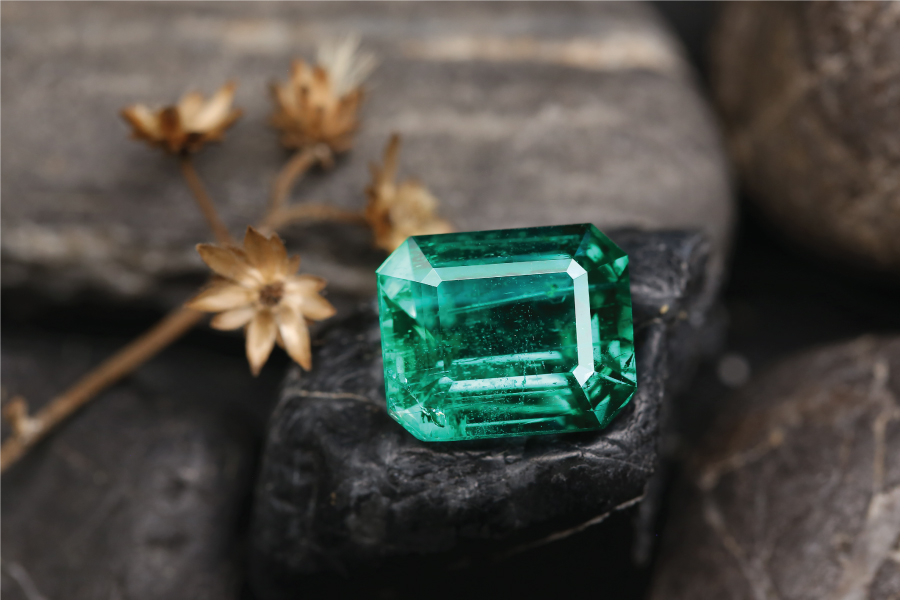One of the biggest threats to the natural gemstone industry is imitation stones posing as natural specimens. While there are entire spaces dedicated to creating lab-grown stones, that is a far cry from their complete transparency and the blatant scams out there.
So how does one ensure that they are indeed purchasing a genuine emerald and not fake emeralds?
In order to answer this pressing and important question, we first must address what an emerald is, how to differentiate it from its impostor peers, and how to keep your finances and your gemstones safe from dishonest individuals in this complicated sphere.
Whether you are searching for natural loose emerald stones, emeralds set in jewelry pieces, or a secondhand heirloom piece, it is imperative to do the proper due diligence prior to making any hasty and expensive decisions.
In order to check natural emerald pieces as well as loose stones for authenticity, here are some helpful tips to assist you in telling the difference
Too Flimsy
Emeralds are soft in comparison to diamonds, rubies, and sapphires but they are still fairly hard. If the stone feels flimsy in your hand, you are most likely holding a fake.
Furthermore, if the edges show signs of wear and tear, it is more likely that you are looking at glass than at a natural emerald.
It Sparkles
Sparkle is something you look for in gemstones like diamonds, but real emeralds do not sparkle. This does not mean that when held up to light a genuine natural emerald won’t shine, but it will be more dull and not have that “fire” that other gemstones tend to have.
Too Perfect Looking
There isn’t a natural emerald on the planet that is completely free of flaws. So, if you are using a tool to examine the stone and it appears to be inclusion-free, it is unlikely that it is a genuine emerald.
Not the Right Shade of Green
While there are many shades of green in this universe, there are only a few that are specific to natural emeralds. There really is nothing quite like the green of an authentic emerald versus that of other gemstones, even other precious gemstones such as green diamonds.
Sometimes real emeralds actually display a bluish green color, and this is completely normal. However, if your “emerald” is displaying other colors such as yellows or browns, it might not be an emerald after all.
The Price is Too Good to Be True
Emeralds can range drastically in terms of price, but they will always be somewhat costly. If the emerald you are looking at has an extremely attractive, even thrifty price, it is more likely a fake.
Always Have an Emerald Examined by an Expert
Even with all of these helpful tools and tips, it is crucial that you have your emerald looked at by an expert in the field. It is the only way to fully ensure that you are getting the real deal and not being duped.
Lastly, in order to prevent very unpleasant experiences, do your utmost to purchase emeralds and emerald jewelry from trustworthy sources.
Astteria has a fabulous reputation as a leader in the diamond, color diamond, and gemstone industry and can help guide you through the daunting process of selecting a stunning and equally authentic emerald or piece of emerald jewelry.

Stunning emerald







